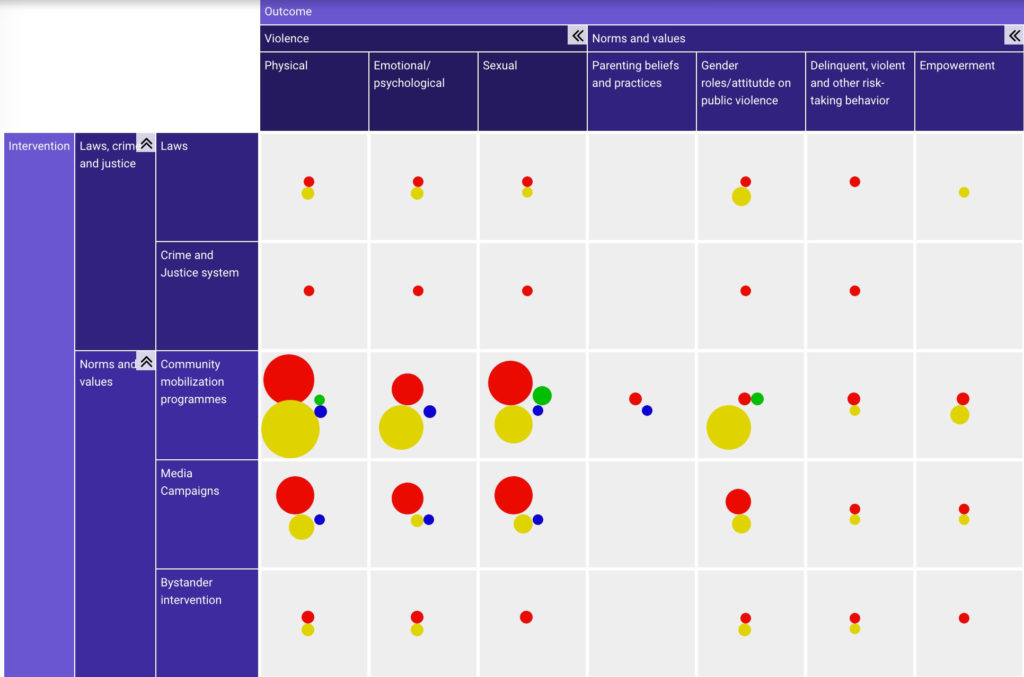UNESCO Releases Evidence and Gap Map on Violence Against Children


The UNICEF Office of Research – Innocenti has partnered with Campbell Collaboration to produce the Evidence and Gap Map (EGM), a comprehensive and interactive catalog of research regarding violence against children (VAC).
The EGM, which visually displays research gaps based on interventions and outcomes related to violence against children, maps 152 impact evaluations and systematic reviews published from 2000-2019. The interventions correspond to the INSPIRE pillars, which are proven strategies for reducing VAC. The seven INSPIRE pillars are: implementation and enforcement of laws, norms and values, safe environments, parent and caregiver support, income and economic strengthening, response and support services, and education and life skills.
 The usefulness of the EGM is bolstered by a complex yet intuitive approach of displaying both the gaps in research and areas with more documented studies. Multicolored circles in the table correspond to type of study (impact evaluations or systematic reviews), confidence level (low/medium vs high), and quantity of study (size of the circle). Clicking on any given cell allows the user to then see the studies that correspond to the circles in each cell.
The usefulness of the EGM is bolstered by a complex yet intuitive approach of displaying both the gaps in research and areas with more documented studies. Multicolored circles in the table correspond to type of study (impact evaluations or systematic reviews), confidence level (low/medium vs high), and quantity of study (size of the circle). Clicking on any given cell allows the user to then see the studies that correspond to the circles in each cell.
The EGM comes at a crucial time in the fight against violence against children. More than 1 billion children—over half the children in the world—report having experienced some form of violence in a previous year[1]. While it is still too early for comprehensive reporting, the COVID-19 pandemic is likely to exacerbate certain factors that contribute to VAC[2]. By clearly demonstrating the breadth of studies available and correspondent research gaps, this resource can serve as a buoy for policymakers and government officials who seek specific solutions to reduce and eliminate violence against children.
INSPIRE: Seven strategies for Ending Violence Against Children
Notes:
[1] https://pediatrics.aappublications.org/content/137/3/e20154079.long
[2] https://www.who.int/bulletin/volumes/98/9/20-263467/en/